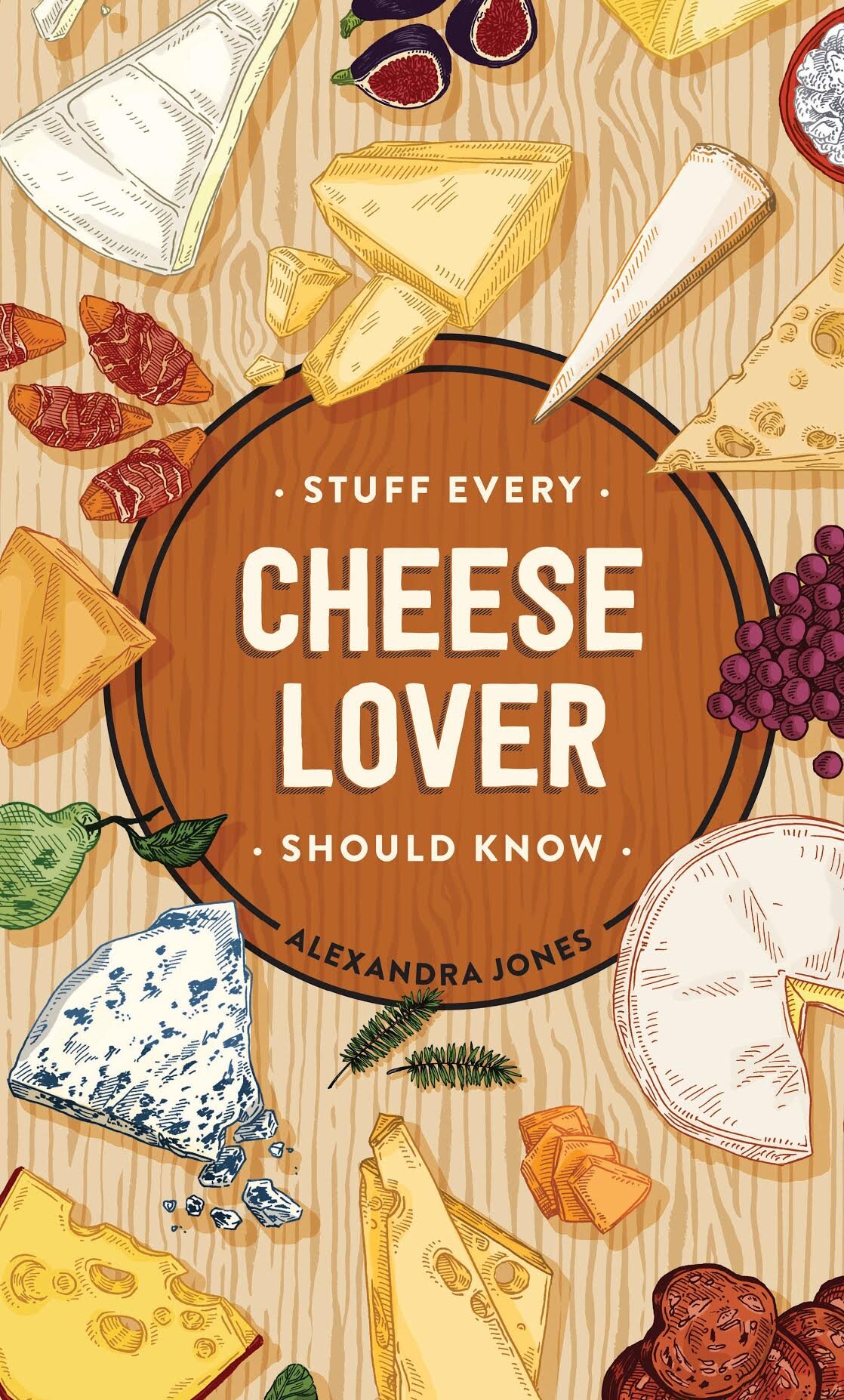Whether you appreciate a good slice of cheddar or consider yourself a cheese connoisseur, you might learn a thing or two from local cheesemonger Alexandra Jones’s new book. Stuff Every Cheese Lover Should Know is a pocket-sized guide to the world of cheese, both global and local.
In this behind-the-scenes look, Grid sat down to talk with Jones about her journey as a food writer, educator, and co-founder of a local cheese subscription, and of course—her new book.
The following interview has been edited for clarity and style.
When did you first fall in love with cheese?
One of my earliest cheese memories is being up in Quebec with my mother’s huge family and having raclette as a big, celebratory New Year’s Eve meal. Raclette is a Swiss tradition—originally, the cheesemakers would travel up and down the Alps with their herds, grazing the lush mountain pastures at high elevations, and stop along the way to make cheese. They’d set up a fire and boil some potatoes, then hold a cut wheel of cheese near the fire to melt it, then scrape the melted cheese onto the potatoes.
Today, we do the same thing with candle-powered or electric raclette grills, but the principle is the same—a big, cozy party where everyone melts their own cheese and uses it to top just about anything.
You founded the Collective Creamery Cheese Subscription, which gets subscribers involved in tasting local cheeses. Why do you think this is important?
I co-founded Collective Creamery with Sue Miller of Birchrun Hills Farm and Stefanie Angstadt of Valley Milkhouse in 2016 because we were looking for a new way to sell their cheeses to consumers. Farmers’ markets are great, but they can really fluctuate based on factors like the weather and the time of year, and they’re really labor-intensive. Rather than add more and more farmers’ markets, we thought we could sell cheese to customers directly with a CSA-style subscription.
We curate these monthly bundles of Stef and Sue’s cheeses, including experimental batches, special editions, and the occasional guest offering from one of our friends around the region, and distribute them at neighborhood drop points in and around Philly. We’re also able to add value to the cheese by sharing tasting notes, recipe ideas, and pairing tips, and keeping our members updated about what’s going on at Sue’s farm and Stef’s creamery. Folks can still sign up for our Fall-Winter season, which gives you a monthly cheese delivery through March.
A lot of your book harkens to the communities that can be found through cheese. How does community affect the way you interact with cheese?
Before I was a writer, I worked as a local foods buyer for the Greensgrow Farm CSA and then the Fair Food Farmstand, neither of which are around any more, sadly. But I always paid special attention to the cheese, and I think part of the reason for that—in addition to the high level of artisan cheesemaking we have here in Pennsylvania—is that I was welcomed into a community of cheesemakers and cheese lovers.
Cheesemakers and cheesemongers are also really used to selling their product experientially, whether that’s at a farmers’ market, sampling at the cheese counter, or at a structured cheese tasting, and I’ve found them to be so welcoming and willing to share information.
Anyone who’s interested in knowing more about cheese should link up with their local cheese community, whether that’s a maker, a monger, a farmstand, or even a chef or restaurateur who’s doing cool things with regional wedges. You’ll get so much more than great food out of it.
I know you write about all different kinds of foods. What made cheese the food that you wanted to write a book about? What makes cheese special to you?
Cheese is special because it’s this combination of food—something we need to engage with several times a day—and art, something that inspires us. It also roots us in time and place: changes as it ages, with the seasons, depending on where it’s made and who makes it.
It’s also a preserved food—something that historically was made in season and stored to ensure survival. A wheel of cheese is literally alive with bountiful microflora, and there’s something so compelling about the textures, flavors, and aromas of fermented foods like cheese.
What advice would you offer to people just starting the process of learning about cheese?
First, hit up alexandrajones.net and buy my book! It’s a light, breezy, and quick read that will get you up to speed on cheese and give you a lot of homework (by which I mean recommend lots of cool cheeses to try). Plus, it’s pocket-sized, so you can bring it to the grocery store or cheese shop with you to refer to if you want guidance while you’re shopping.
Next, make friends with your local cheesemonger, whether that’s behind the counter at Di Bruno Bros. or at a farmers’ market, and talk to them. Ask for questions and recommendations.
How do you want people to respond to this book? What is the first thing you would want a reader to do after finishing?
I’d love for them to seek out some great cheese—ideally a local or domestic cheese. Imported cheese is great, don’t get me wrong—but a big part of my mission with this book was to emphasize the importance of supporting American artisan and small-scale cheesemakers, especially those raising their livestock on pasture and using traditional production methods. Great cheese made with nutritious, high-quality milk has a place on the everyday American table if we can get enough consumers on board.
I’d also suggest that they check out the Pennsylvania Cheese Guild and consider becoming an Enthusiast member. I’m working with them on a grant-funded project to hold Pennsylvania Cheese Month starting in October 2021, and we could really use their support.
You include instructions in your book on how to make cheese. Do you enjoy making your own cheese?
Making cheese at home is a ton of fun—before the pandemic, I taught classes in making mozzarella, paneer, ricotta, and more at the Free Library of Philadelphia’s Culinary Literacy Center and in private kitchens. It’s an experiential, tactile way to have fun in the kitchen with your kids or your pandemic pod, then dig into what you’ve made. The paneer recipe in my book is really fast, very tasty, and demonstrates the main principles of how cheese is made, too.
These days, when I’m making my own dairy products, I tend to stick with culturing cream, which gives you crème fraîche. You can enjoy that as a condiment, spread, or dip, or you can churn it into one of my favorite things: cultured butter, which has so much more flavor than sweet cream butter. The byproduct—cultured buttermilk—is also amazing to use in baked goods, as a marinade for meats like fried chicken, or in grits.
If you were to compare your personality to a cheese, what cheese would you be?
I think I’m a bit like a really dense, luscious sheep’s milk feta. I’m salty and pungent, but also tender and rich.
For more insight into the culture, traditions, and processes of cheese making and eating, check out Stuff Every Cheese Lover Should Know at alexandrajones.net.
[Editor’s note: Alexandra Jones is a contributing writer for Grid Magazine.]











